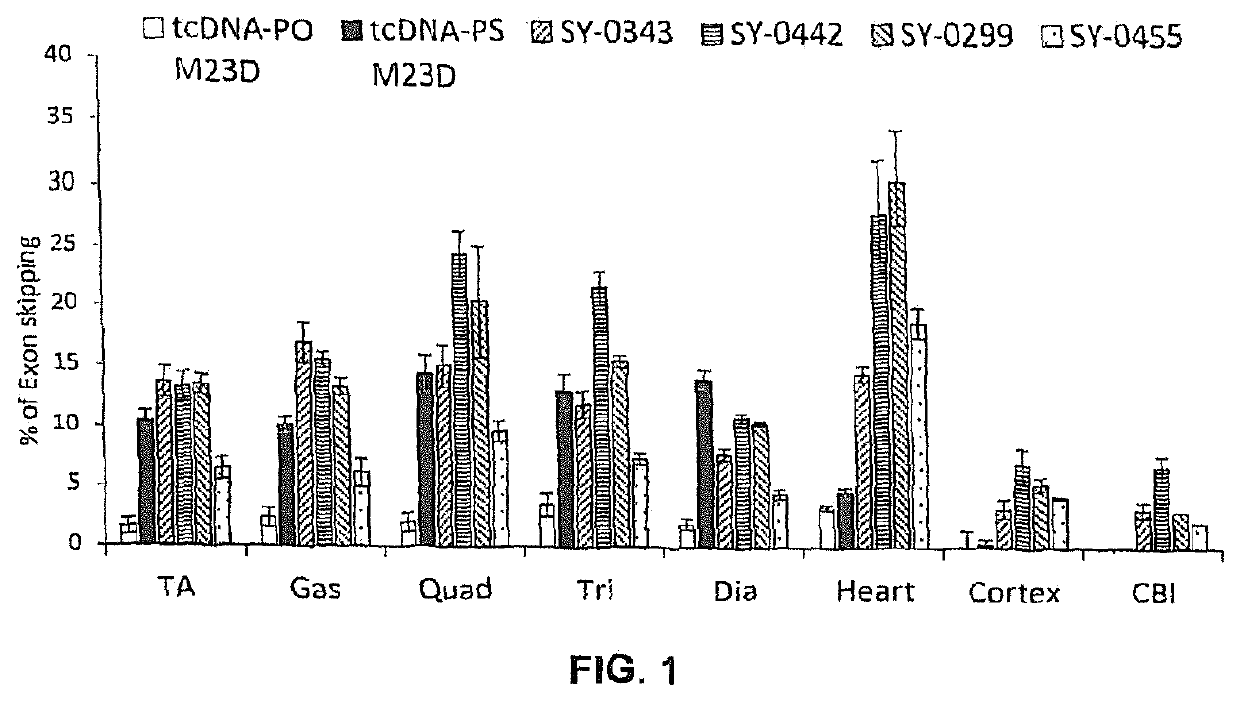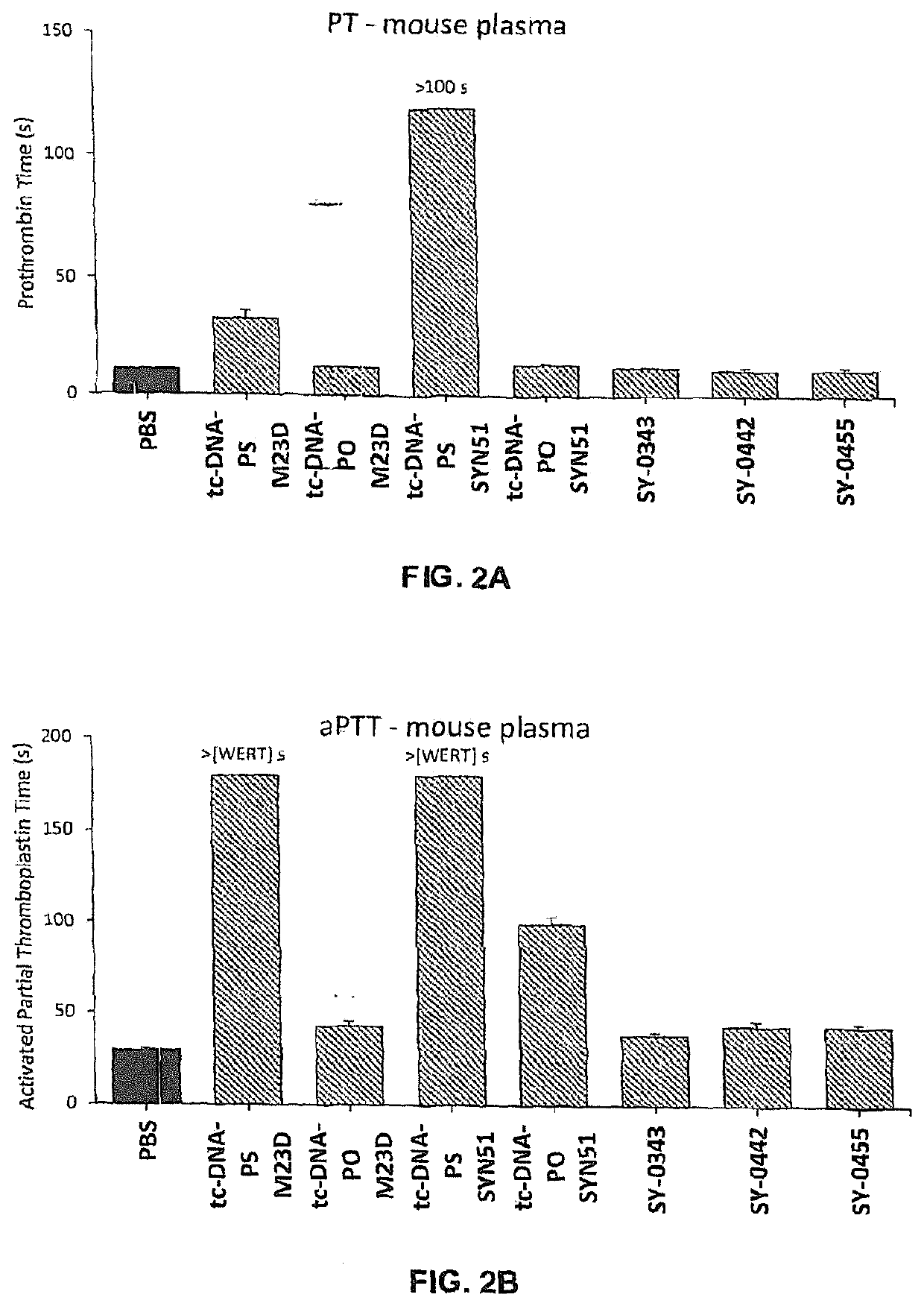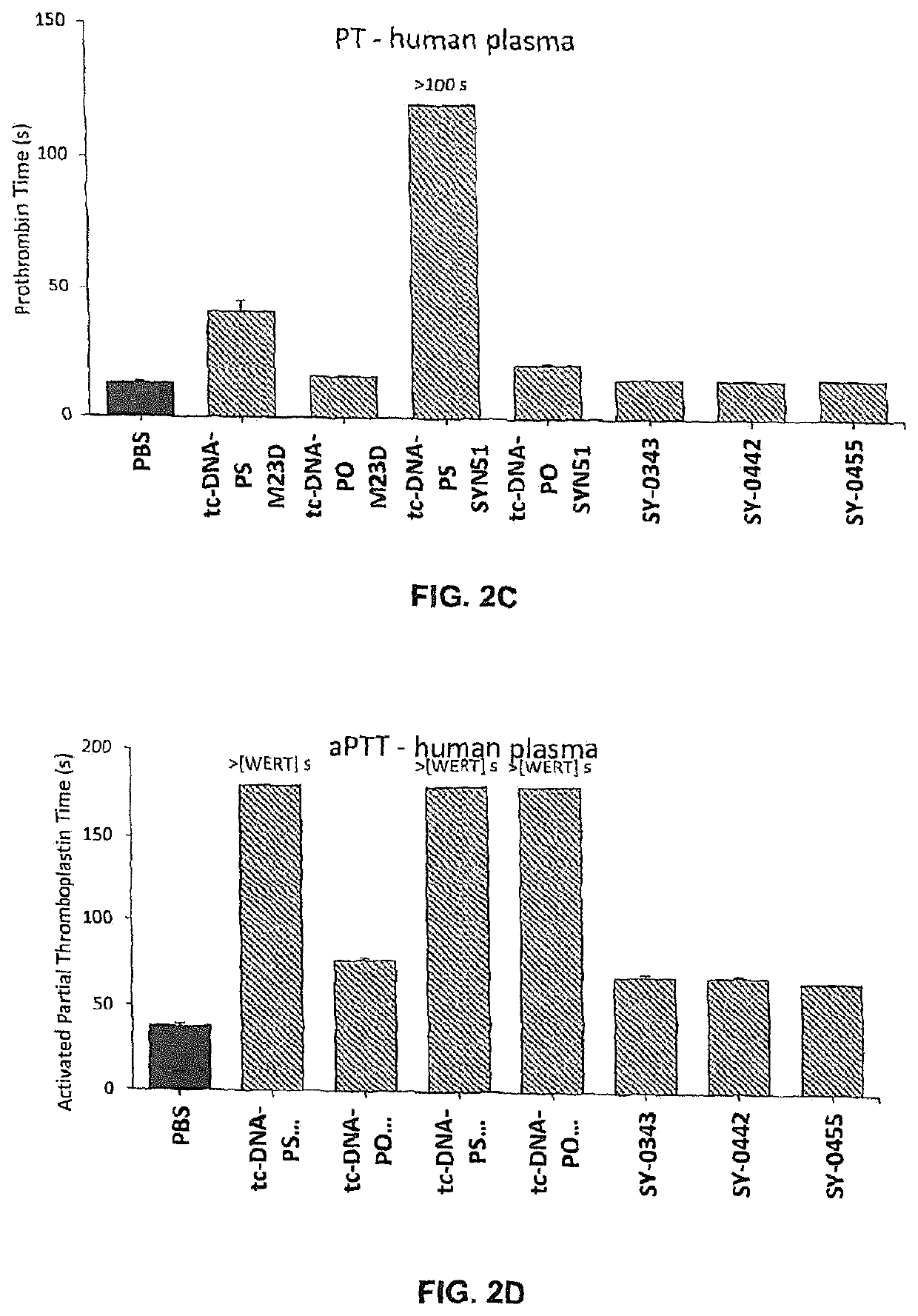Modified oligomeric compounds comprising tricyclo-dna nucleosides and uses thereof
a technology of tricyclodna and oligomer, which is applied in the direction of muscular disorder, organic chemistry, drug composition, etc., can solve the problems of recurrent necrosis cycle loss of ambulation, etc., and achieves low toxicity, improved safety profile, and high efficacy
- Summary
- Abstract
- Description
- Claims
- Application Information
AI Technical Summary
Benefits of technology
Problems solved by technology
Method used
Image
Examples
example 1
Inventive Compositions for the Treatment of Duchenne Muscular Dystrophy
Evaluation of Efficacy
[0668]Adult mdx mice were treated weekly over 4 weeks with intravenous injections of different 13-mer AONs targeting the donor splice site of exon 23 of the dystrophin pre-mRNA (M23D: +2-11), namely with either SY-0308, SY-0210 and the inventive SY-0299, SY-0343, SY-0442 and SY-0455. SY-0308 (also named “tcDNA-PO M23D” interchangeably herein) corresponds to p-CCTCGGCTTACCT-OH of SEQ ID NO:1, with all nucleotides being tc-DNAs and all internucleosidic linkage groups being phosphorodiester linkage groups, and p being a phosphate moiety at the 5′ end. SY-0210 (also named “tcDNA-PS M23D” interchangeably herein) corresponds to p-CCTCGGCTTACCT-OH of SEQ ID NO:1, with all nucleotides being tc-DNAs and all internucleosidic linkage groups being phosphorothioate linkage groups, and p being a phosphate moiety at the 5′ end. The inventive composition SY-0343 is herein interchangeably referred to as “Pal...
example 2
Co-Precipitation Experiments and Proteomics
[0684]Oligonucleotides of interest were synthesized as biotinylated conjugates for subsequent co-precipitation of potentially interacting serum proteins by using streptavidin-beads. The biotinylated derivatives used in this study are SY-0440, SY-0427, SY-0446, SY-0448, SY-0445, SY-0443, and SY-0451, which are defined and characterized in Table 3 and shown in FIG. 6.
[0685]Biotinylated oligonucleotides, immobilized on streptavidin-beads, were incubated in the presence of serum for 1 h. Beads were collected by low speed centrifugation, washed and then solubilised in the appropriate buffer for further protein analysis by SDS-PAGE, Orbitrap LC-MS / MS and SDS-PAGE / MALDI-TOF.
[0686]FIG. 7 exemplifies SDS-PAGE analysis of protein recovery from mouse and human sera for the oligonucleotides used in this study. It appears that SY-0440, i.e. the tcDNA M23D with full-PS retained far more serum proteins than its tcDNA-PO equivalent, SY-0427. This result is...
example 3
Stability of Inventive Compositions in Human Serum
[0691]The stability of preferred inventive compositions in human serum was studied on oligonucleotides SY-0343, SY-0442, SY-0299, SY-0450, SY-0455 and SY-0357. The inventive compositions are defined and characterized in Table 3.
[0692]A mixture (total volume 80 μL) composed of human serum 40 μL, oligonucleotide stock solution, 20 μL of PBS (2×) and milliQ water was prepared in 0.2 mL PCR vial, so that the final concentration of the oligonucleotide was 2 μM and incubated at 37° C. Aliquots were withdrawn after 4, 24, and 120 h. The mixture was digested in the PCR vial with proteinase K (80 μL of mixture, 100 μL of proteinase K buffer 2× (200 mM Tris-HCl, pH 8.5, 400 mM NaCl, 10 mM EDTA, 0.4% SDS), 20 μL proteinase K (20 mg / mL in 100 mM Tris-HCl pH 8.5, 10 mM CaCl2) at 55° C. for 2 h. The mixture was then cooled to room temperature, centrifuged (13400 rpm, 10 min) and the supernatant was collected. An aliquot of 50 μL was then taken for...
PUM
| Property | Measurement | Unit |
|---|---|---|
| Fraction | aaaaa | aaaaa |
| Fraction | aaaaa | aaaaa |
| Fraction | aaaaa | aaaaa |
Abstract
Description
Claims
Application Information
 Login to View More
Login to View More - R&D
- Intellectual Property
- Life Sciences
- Materials
- Tech Scout
- Unparalleled Data Quality
- Higher Quality Content
- 60% Fewer Hallucinations
Browse by: Latest US Patents, China's latest patents, Technical Efficacy Thesaurus, Application Domain, Technology Topic, Popular Technical Reports.
© 2025 PatSnap. All rights reserved.Legal|Privacy policy|Modern Slavery Act Transparency Statement|Sitemap|About US| Contact US: help@patsnap.com



